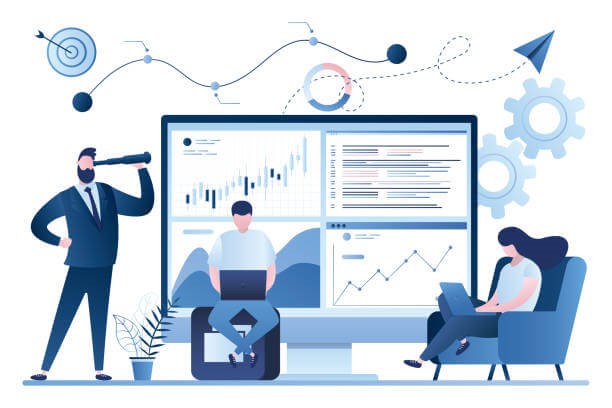In today’s competitive market, revenue management is key for hotels to optimize revenue opportunities.
With digitally-savvy and cost-conscious travelers on the rise, hotels must maximize profits while providing top-notch service.
That’s why we’ve put together five best practices for revenue management that can help hotels boost their bottom line.
From conducting competition analysis to implementing dynamic pricing and driving direct bookings, we’ll provide practical tips and insights that you can use to optimize your revenue strategies.
| Key Takeaways |
|
5. Conduct Competition Analysis or Benchmarking
Competition analysis and benchmarking are essential for understanding your position in the market, setting realistic targets, and making informed decisions about pricing and promotions.
In order to stay competitive, it is important for your hotel to gather data on key performance indicators (KPIs) like occupancy rates, average daily rates, and revenue per available room (RevPAR).
While you can use tools like STR reports, market intelligence platforms, and social media monitoring to collect data, you can also tap into your RMS as it has the power to:
- Automate data collection
- Benchmark a hotel’s prices against competitors
- Segment the market based on competitors’ pricing
- Forecast demand based on competitors’ strategies
- Provide competitive intelligence on pricing changes and revenue trends
With this data, you can optimize pricing and revenue strategies, gain a competitive advantage, and choose between taking a reactive or proactive approach to the market.
| What’s the difference between reactive and proactive strategies? |
Reactive strategies involve reacting to market fluctuations and outpricing competitors. In contrast, proactive strategies include using data to make forecasts and set rates. Both strategies can help businesses stay competitive in their market. |
4. Streamline Channel Management
With the rise of online travel agencies (OTAs) and other booking platforms, managing your hotel’s distribution channels has become increasingly complex.
But investing in a channel management system or choosing an RMS that has these capabilities is the key to reaching new markets, enhancing visibility, and boosting your bottom line.
Channel managers can:
- Automate rate and inventory updates across all platforms
- Synchronize everything in real time
- Reduce the risk of overbookings
- Help maintain a cohesive brand image across all platforms
By automating this process, you’ll be able to capture data on booking patterns, demand trends, and customer behavior. This will ultimately allow you to make strategic decisions regarding pricing and booking.
You’ll also be able to use these tools to find the most profitable distribution channels to adjust your marketing efforts and allocate resources better.
3. Implement Dynamic Pricing
Now that you’ve determined competitive rates and optimized your channels, it’s time to adopt a powerful strategy that lets you adjust room rates in real-time based on factors like demand, competition, and market conditions.
By implementing dynamic pricing, you’ll capitalize on high-demand periods, fill rooms during slow periods, and cater to different customer segments and booking patterns.
Behind every successful dynamic pricing strategy lies a robust RMS. You’ll need it to:
- Track and analyze historical booking data
- Monitor KPIs, trends, and competitor rates
- Make informed decisions about pricing adjustments
- Balance revenue optimization with guest satisfaction
Using this information, you’ll be able to create pricing strategies that appeal to different customers. Just remember, don’t be afraid to experiment with different pricing models and find the one that works best for your hotel.
2. Drive Direct Bookings
While OTAs and third-party platforms have their benefits, driving direct bookings should be a top priority for your hotel.
They help you cut commission costs, establish a stronger relationship with guests, and have better control over pricing and inventory.
To drive direct bookings, you should:
- Ensure your website is user-friendly, mobile-optimized, and showcases your property in the best light possible
- Offer exclusive deals, packages, or perks to guests who book directly, such as room upgrades, free breakfast, or spa vouchers
- Tell a compelling story about your hotel’s history, location, or design that sets it apart from the competition
- Collaborate with local businesses to offer special experiences or packages that are exclusive to direct bookings
- Tap into your online community and share positive reviews, guest photos, and testimonials on your website and social media
By implementing these strategies and continuously refining your approach, you’ll be well on your way to driving more direct bookings and maximizing your hotel’s revenue.
1. Pair Your RMS with a BI Solution
Revenue management isn’t just about setting the right prices—it’s also about making informed decisions based on data. And to get the most out of your RMS, you need to pair it with a BI solution, like Hotel Investor Apps (HIA).
While both systems are useful on their own, using them in tandem gives you a comprehensive view of revenue and performance metrics. This powerful combination lets you:
- Unlock deeper insights that optimize your hotel’s performance
- Analyze revenue and revenue forecasts against budget and forecasts from your accounting software
- Project staffing trends and needs, so you’re always prepared
- Plan for capital projects based on cash flow
- Review historical data with revenue forecasts to help you identify trends and patterns
- Make data-driven decisions
For instance, you can use historical data and revenue forecasts to predict staffing trends. By doing this, you ensure you have the right staff in place to provide excellent service while reducing labor costs.
To learn more about how you can improve your bottom line with HIA’s BI solution, reach out to a specialist.

Co-founder and COO
Chip Fritsch, instrumental in overseeing HIA’s daily operations, brings 15+ years of hospitality industry experience to his role. His responsibilities span from product development to business growth strategies and client onboarding. A former full-service hotel General Manager, Chip knows the in-and-outs of hotel operations and that motivates him to develop new products and services to best support hoteliers. The past 7 years have seen Chip immersed in hospitality software where he has been pivotal in helping HIA win the Acumatica Development Award.










